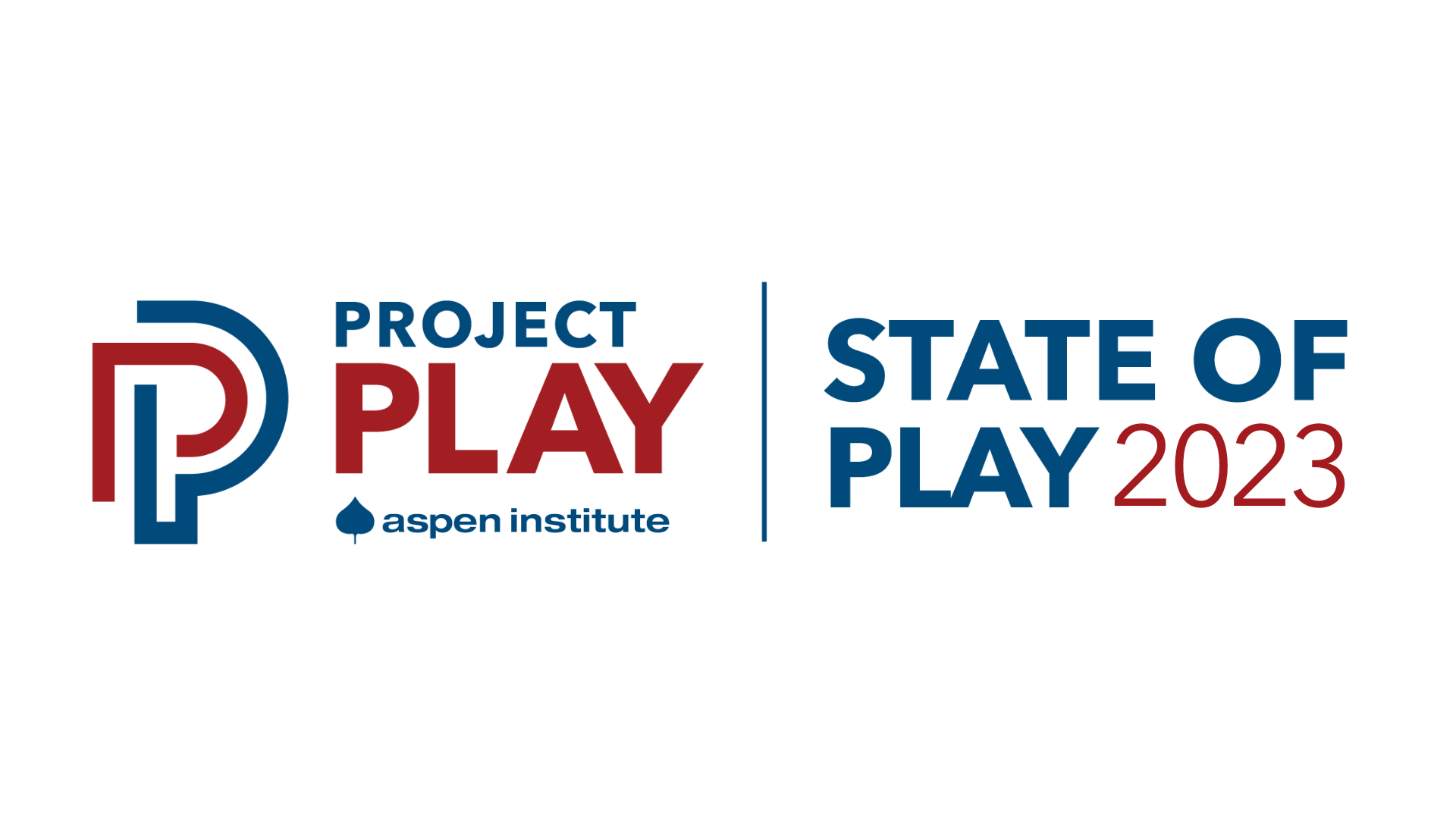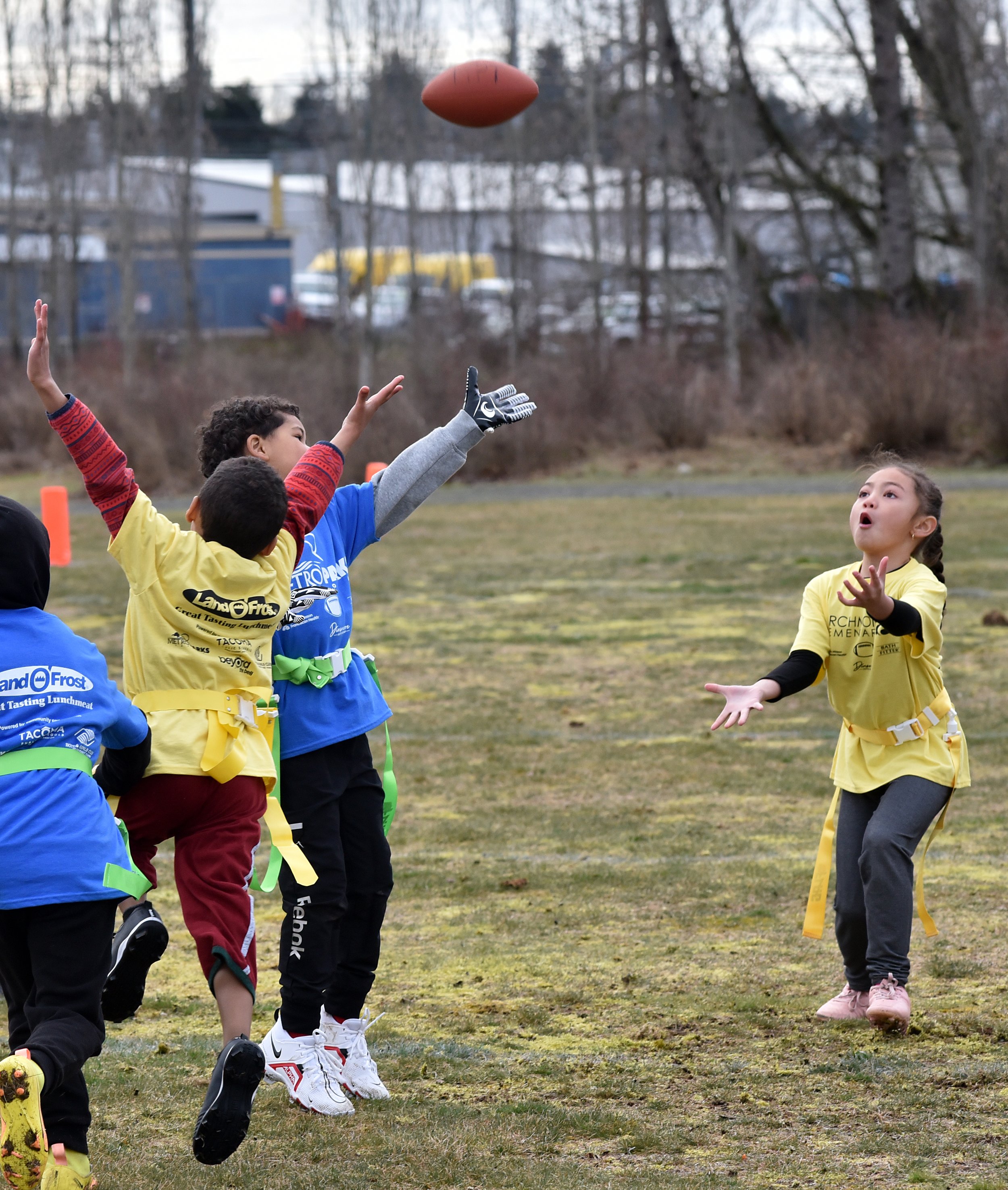Costs to Play Trends
State governments are taking greater interest to fund sports in underserved communities, and more investment is happening in middle school sports. The trends below come from the Aspen Institute’s State of Play 2023 report, courtesy of interviews conducted with leaders in the youth sports space, data analyzed by the Project Play team, or articles and research produced by other entities.
Top 5 Costs to Play Trends
1
Americans say youth sports deserves public funding. More than half of U.S. adults (52%) say such support for sports would have the most impact at the youth and school sports levels, according to a new survey commissioned by the Commission on the State of U.S. Olympics and Paralympics. Far fewer adults identified the Olympics (14%), Paralympic Games (7%), college sports (6%) and professional leagues (5%) as deserving of taxpayer support.
SurveyUSA.com interviewed 1,000 adults on a range of questions. Support for youth and school sports was the top desire for public funding, no matter the respondent’s gender, age, race, political affiliation, education, income, urbanicity or geographical location.
Half of survey respondents who played youth sports or who have children who have played said they have struggled to afford the costs to participate. The issue impacts a broad swath of Americans of all backgrounds, including 66% who are Latino/a, 62% of 35-49-year-olds, 58% of those with high school educations, 57% of lower-income adults, and 56% of both Republicans and those who rent their homes. More than 4 in 5 Americans say sports should be more accessible to those in underserved communities, as well as for athletes with physical disabilities.
2
Private equity is flowing billions of dollars into the youth sports market. As professional and college leagues become expensive to buy, more money from private equity firms is flowing downstream into youth sports. This development is causing sport providers to consolidate.
“The smaller organizations are getting smaller, and the bigger organizations are getting bigger,” said Jeremy Goldberg, president of LeagueApps. “Private equity offers the opportunity to address shortcomings in youth sports for organizations. At the rec level, there’s the potential for standardization, better coaches, more efficiencies and better multisport experiences. There’s also the potential of worsening the dynamics that we see in youth sports.”
IMG Academy, a for-profit boarding school in Florida for aspiring athletes, was sold in April 2023 for $1.25 billion to Hong Kong-based private equity group BPEA EQT. Bain Capital acquired Varsity Brands, the cheerleading and spirit operator, for $2.5 billion in 2018. World Capital Partners bought a majority stake in TeamSnap, the youth sports management platform, for an estimated $150 million in 2021.
Juggernaut Capital invested heavily in 2019 into youth sports operator 3STEP Sports, which has ambitiously acquired many club sports and AAU basketball operators. 3STEP Sports claims it operates 2,500 events with 157 brands and 1.1 million participants in nine sports each year.
Consolidating clubs and tournaments often means a better product wins out, fewer options for families, and incremental cost increases, said Jason Clement, CEO at The Sports Facilities Companies, which manages more than 30 youth sports facilities in the U.S. “For kids who want to develop faster, I think it’s better for long-term, competitive play,” he said. “But it makes it harder for kids who want to figure it out as they go and adopt a sport midstream.”
52%
U.S. adults who say funding sports has the most impact at the youth and school levels
3
State governments are paying more attention. The PLAYS Sports Coalition unlocked state funding in Maryland and Massachusetts for one-year grants to programs using sports as a tool for youth development in disadvantaged communities. Working with the Maryland Office of Tourism Development and the Massachusetts Office of Housing and Economic Development, PLAYS distributed $450,000 to more than 30 organizations to cover program costs, equipment, and renovations of facilities.
States and counties are more focused on the access issue in part “due to a concerted advocacy effort and data showing there is this disparity between higher- and lower-income households,” said Jared Cooper, who led the state-funding efforts as executive director of FundPlay Foundation. “In many cases, state legislators have coached their kids and recognize the value of youth sports in their own communities, and that if not everyone has access to these positive outcomes, that’s something they can help to rectify.”
Meanwhile, for the second time in recent years, Massachusetts state senator Barry Finegold proposed creating a commission to study the growing profit-driven, pay-to-play youth sports industry in the state. Massachusetts began with an informational hearing in October 2023. Under Finegold’s proposal, the commission would investigate and make recommendations about best practices of youth sports organizations, potential oversight and accountability in the industry, the financial strains that organizations have faced because of the pandemic, ways to ensure families actually benefit from private programs, and the financial costs of privately-run organizations. Finegold said he believes kids 13 and under need a sports regulatory body, not unlike high school and college sports.
Federal efforts in youth sports are also advancing. In 2023, three members of Congress reintroduced the PLAYS in Youth Sports Act, a bipartisan bill that would create a $75 million grant program to support nonprofit organizations working to improve health and positive youth development through sports. “It’s an uphill battle,” Cooper said. “We’re trying to use this to develop relationships with congressional offices. If we can get a hearing and a committee, I think we’ll be able to make a strong case that this will more than pay for itself.”
4
The first mobile sports betting funds get distributed to youth sports providers and challenges emerge. For decades, many states have used the lottery to fund public schools. Today, some states have identified legalizing mobile sports betting as an opportunity fund youth sports programs in need, a technique used in other countries to grow the quality and quantity of recreational options in a community. In the first year, roll-out of these innovative programs was rocky.
New York law mandated 1% of taxes in the first fiscal year of gambling, and $5 million a year each year after, to fund sports programs for underserved youth. New York emerged as the biggest online bookmaking market in the nation, with $4.7 billion placed in wagers and $160 million in tax revenue. That translated to $1.6 million for youth sports – which would been much more if not for the 1% cap. Proceeds for youth sports are directed to a fund overseen by the state Office of Children and Family Services.
WXXI News reported that sports organizations are confused about “a patchwork of processes that vary county by county.” Many knew nothing about the law or that money was available to their programs. “How gambling proceeds are to be steered to youth sports organizations in New York has received scant attention,” WXXI News wrote.
Meanwhile, in Ohio, legislators passed a mobile sports betting law that mandated half of all tax revenue support interscholastic athletics and extracurricular activities. However, Senate Republicans removed that provision and redirected the money to the state Education Department for schools to use the money as they wanted.
$1.6M
Tax revenue collected for youth sports through New York's new mobile sports betting law
5
Greater investment is coming to elementary and middle school sports. Philanthropists and governments are recognizing that schools offer the most promise to reduce inequitable access that younger children face in organized sports. Stephen and Ayesha Curry’s Eat. Learn. Play. Foundation announced it will raise $50 million to support Oakland students by 2026. The investment includes transforming 25 schoolyards and helping to grow elementary and middle school sports, drawing from the Aspen Institute’s State of Play Oakland report recommendation to prioritize schools as hubs to access safe and equitable play.
Until this year, Fairfax County (Virginia) Public Schools did not offer middle school athletics despite being the 11th largest school district in the U.S. The reasoning was that local community sports programs were already robust and popular, according to The Washington Post. But given the costs and transportation challenges of pay-to-play sports, the new superintendent wanted a more equitable policy that could also help young people’s mental health. Fairfax invested $600,000 for cross country and track teams in 2023, and more sports may be added. Nearly 2,000 students attended the first district cross country meet.
For the first time, Baltimore City Public Schools is offering middle school sports through a partnership with Under Armour. Middle school students are now participating in seven programs (flag football, cross country, indoor bocce, volleyball, basketball, track and field, and outdoor bocce), according to WYPR News. Baltimore is designing the system for everyone to access the benefits of sports at younger ages, especially girls and students with disabilities.
Research Sources
SurveyUSA Market Research Study
SurveyUSA interviewed 1,000 adults nationwide on behalf of the Commission on the State of the U.S. Olympics and Paralympics (CSUSOP), an independent body created by Congress to study the state of U.S. participation in the Olympic and Paralympic movement. Questions pertained to Olympic and Paralympic competition, the role of the U.S. Olympic and Paralympic Committee, safety in sports, diverse representation within sports governing bodies, doping in sports, and issues impacting youth sports. Read results from the survey.









